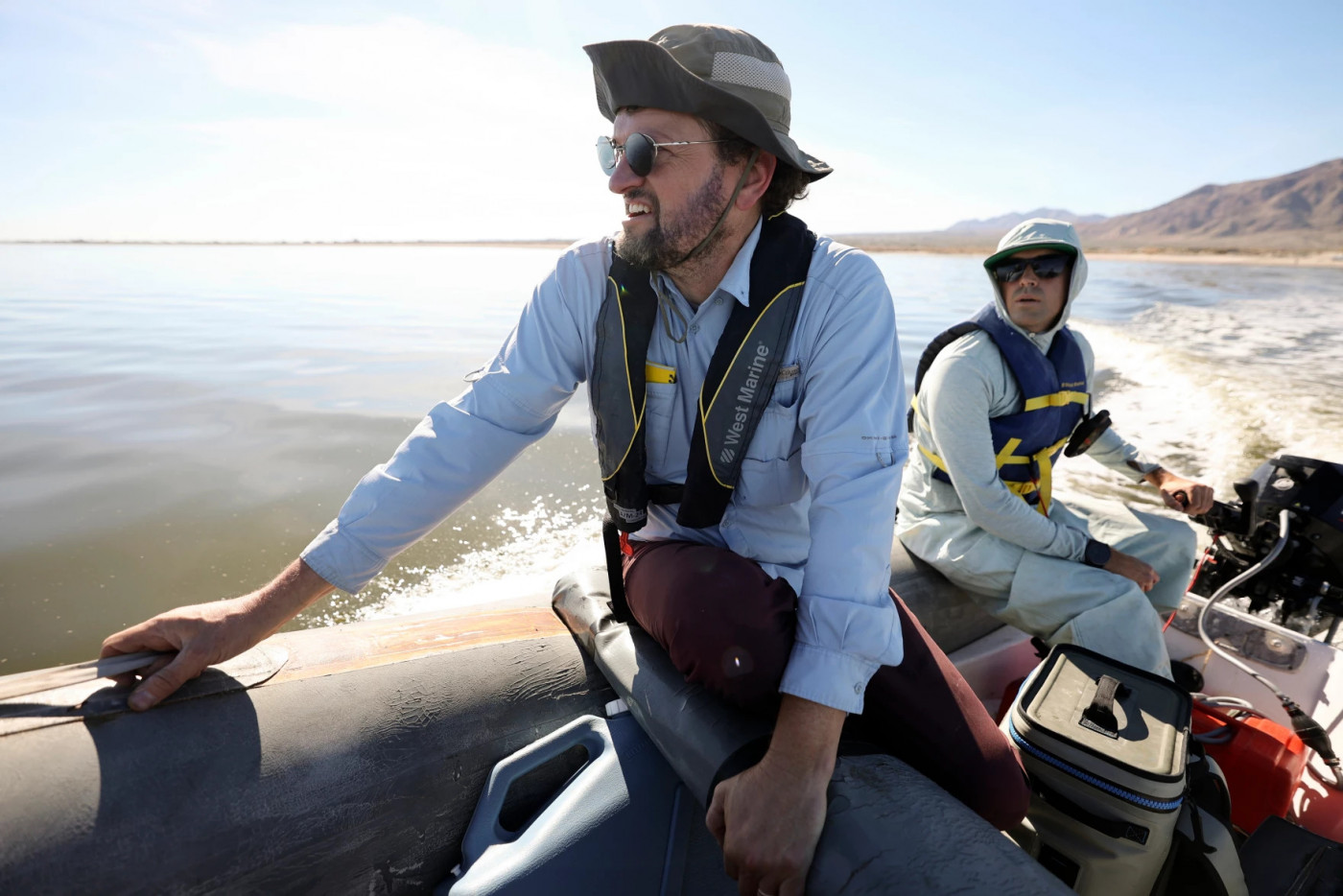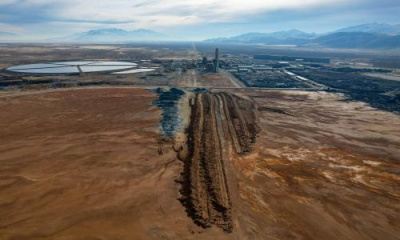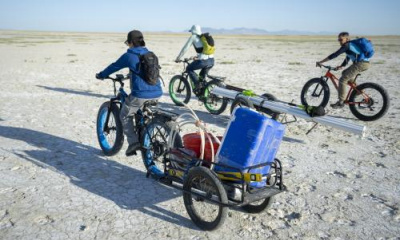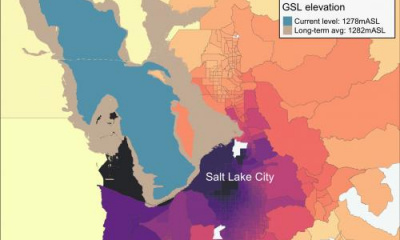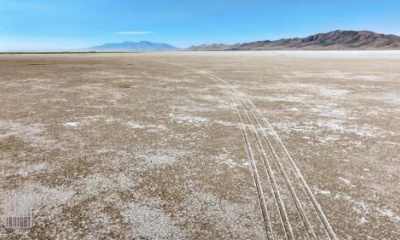The eighth largest saline lake in the world is a Utah icon. More than 10 million birds take sanctuary there every year.
And sometimes, Great Salt Lake smells like rotten eggs.
That distinct tang is caused by hydrogen sulfide, a colorless gas that can be harmful in high concentrations. When concentrations are excessive, it “could kill you or [H2S] can cause nausea and headaches, or more commonly, it's just a nuisance,” said Wayne Wurtsbaugh, a retired science professor at Utah State University who studied the gas.
Great Salt Lake isn’t the only saline lake that produces hydrogen sulfide, there’s also the decaying Salton Sea, California’s largest lake.
“It used to be that people say, ‘Oh, it smells like dead fish,’ but now there's no more fish in the Salton Sea. So you can't say it smells like fish, it smells like hydrogen sulfide,” said Ryan Sinclair, an environmental microbiologist at Loma Linda University.
Great Salt Lake and the Salton Sea have similar problems. Both have declined significantly since the 1980s, their ecosystems are struggling to survive, miles of lakebed remain exposed and they both produce that spoiled food stench. Wurtsbaugh said Salton Sea research on hydrogen sulfide could teach Utah a thing or two about the gas.
There are still a lot of unknowns about H2S. One of its mysteries is where it comes from, especially because it seems to arise from different conditions in different places. At the Salton Sea, scientists believe it’s more present when water levels are low. At Great Salt Lake, it’s found when water levels are higher. Scientists also want to assess the impact low doses of exposure have on the many surrounding shoreline communities. That’s what Sinclair is hoping to answer in California.
“Is it related to the algal blooms? Is it related to the nutrients? Is it a human pollution issue or is it just a natural phenomenon that's going to happen no matter what?” he wondered. “I haven't yet come to any conclusions, but chronic low dose to H2S, what's the health concern there?”
Sinclair’s team, in partnership with community advocate Alianza Coachella Valley, the University of California Los Angeles and Brown University, have placed a hydrogen sulfide and a nitrogen oxide air sensor about two miles off the north shoreline of the Salton Sea. Sinclair is also working to compile an environmental justice assessment on chronic low-dose exposure.
Aydee Palomino, the environmental justice project manager with Alianza Coachella Valley, said this was “in response to community concerns about hydrogen sulfide and how little in reality it's been studied and potential health impacts on the nearby communities and to start linking water quality to air quality in the region.”
To better understand the gas, Sinclair and members of the research team visit the Salton Sea often to collect water samples and check on the sensors. It’s quite the process. Since the sea’s water levels continue to drop, it’s getting harder and harder to launch their inflatable boat. There isn’t an accessible boat ramp anymore because of the conditions, so Sinclair can spend close to an hour trekking through knee-deep mud and sinking into the mucky sediment in an attempt to get the boat into the water.
So far, the research has allowed them to conclude that Salton’s stink is worse in the excessively hot summer months when temperatures reach well over 100 degrees throughout the Imperial and Coachella valleys.
Hydrogen sulfide hasn’t been studied thoroughly in Utah, Wurtsbaugh said, but the research he conducted back when Great Salt Lake was flourishing showed high levels in Farmington, Gunnison and Gilbert bays. H2S forms in the deep brine layer, which typically happens at the deepest point in the lake. When water levels were healthy, the deep brine layer “covered 50 to 70% of the bottom of the lake.” Although, “that’s not the case anymore.”
The rotten egg stench, he said, gets worse during big wind events.
“You get enough turbulence and you can mix some of that deep brine layer up into the surface layer of the lake and bring up hydrogen sulfide,” Wurtsbaugh said. “And it's highly toxic.”
While neither the state nor Wurtsbaugh’s team tracked the number of organisms in Great Salt Lake that died during big wind storms, he knows deaths occurred. Other studies at the Salton Sea have found that was the case there.
“In the Salton Sea, tens of millions of tilapia died in one event. The zooplankton, which in the Great Salt Lake, that would be [comparable to] brine shrimp, died,” he said. “So in the Great Salt Lake, we think we have the same thing going on.”
The deep brine layer, Wurtsbaugh said, begins to form around 22 feet deep, and the average depth of the Great Salt Lake currently sits at 14 feet, with the deepest part at about 24 feet. While a deep brine layer could be happening right now, it’s not enough to cause a big stink, he added.
Although large amounts are unable to form at Great Salt Lake at current levels, Wurtsbaugh said hydrogen sulfide does live in the sediment of the lake, specifically the “soft and muddy” parts close to the shoreline. During strong winds when waves crash up against the shoreline “you're going to get some hydrogen sulfide released into the air under those conditions as well.”
Wurtsbaugh said there is “possibly a management way to have your cake and eat it too” by berming along the causeway to prevent saturated, dense water in the north arm from reaching the south arm where there is barely the right salinity level to keep ecosystems afloat. The state has already done this in the past to stabilize the salinity amounts in the south arm.
“It has a twofold benefit of just decreasing salinity in the upper layer where the brine shrimp and the brine flies live. And it should and seemingly did decrease the deep brine layer as well,” he said.
Another tactic is to follow in the Salton Sea’s footsteps by conducting more research. Currently, there isn’t any hydrogen sulfide monitoring happening in Great Salt Lake, Wurtsbaugh said.
“It would be a good thing to do. And I would hope that the Department of Air Quality would consider that,” he said.
KSLTV5's Alex Cabrero contributed to this report

